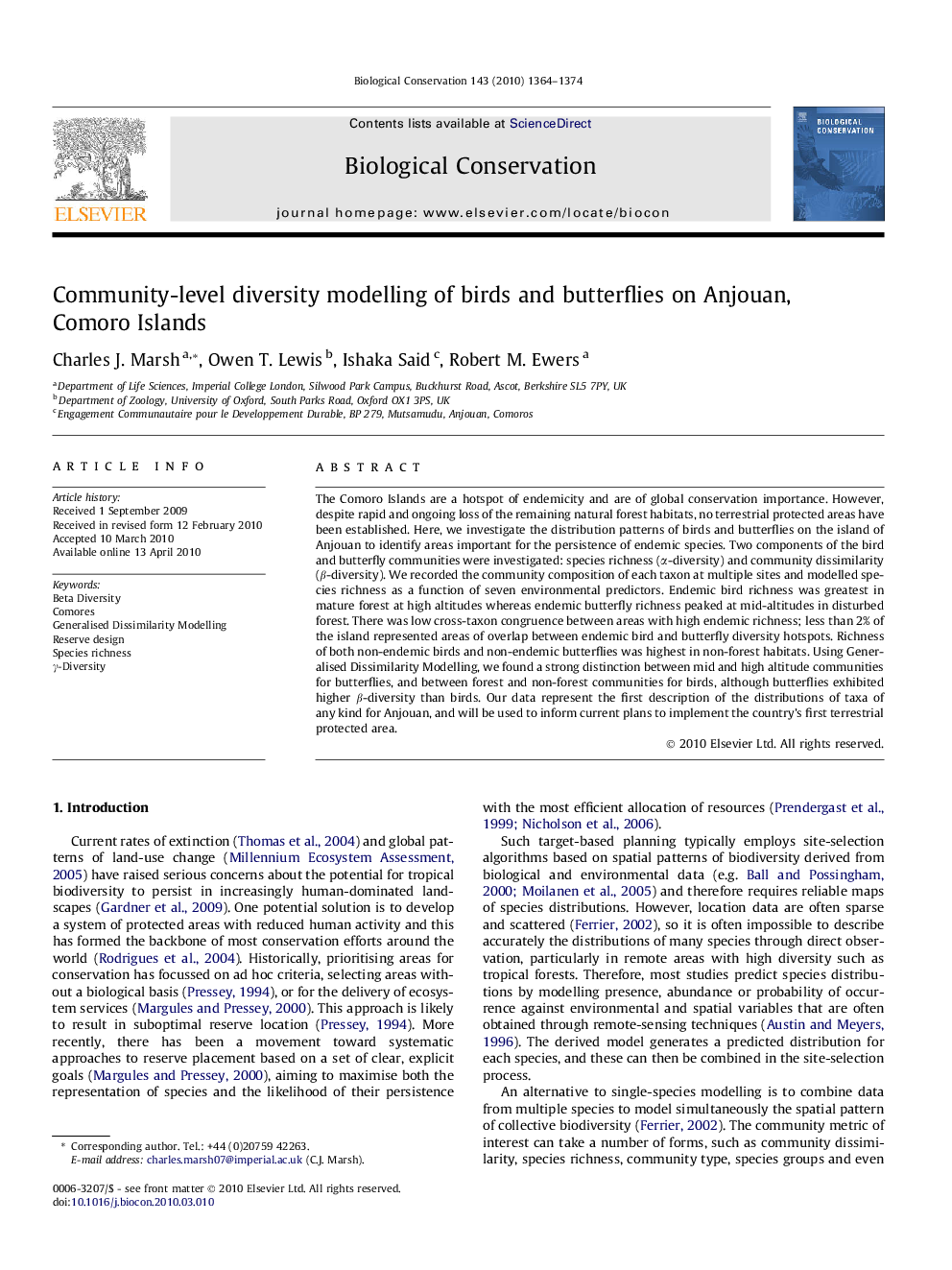| Article ID | Journal | Published Year | Pages | File Type |
|---|---|---|---|---|
| 4385571 | Biological Conservation | 2010 | 11 Pages |
The Comoro Islands are a hotspot of endemicity and are of global conservation importance. However, despite rapid and ongoing loss of the remaining natural forest habitats, no terrestrial protected areas have been established. Here, we investigate the distribution patterns of birds and butterflies on the island of Anjouan to identify areas important for the persistence of endemic species. Two components of the bird and butterfly communities were investigated: species richness (α-diversity) and community dissimilarity (β-diversity). We recorded the community composition of each taxon at multiple sites and modelled species richness as a function of seven environmental predictors. Endemic bird richness was greatest in mature forest at high altitudes whereas endemic butterfly richness peaked at mid-altitudes in disturbed forest. There was low cross-taxon congruence between areas with high endemic richness; less than 2% of the island represented areas of overlap between endemic bird and butterfly diversity hotspots. Richness of both non-endemic birds and non-endemic butterflies was highest in non-forest habitats. Using Generalised Dissimilarity Modelling, we found a strong distinction between mid and high altitude communities for butterflies, and between forest and non-forest communities for birds, although butterflies exhibited higher β-diversity than birds. Our data represent the first description of the distributions of taxa of any kind for Anjouan, and will be used to inform current plans to implement the country’s first terrestrial protected area.
